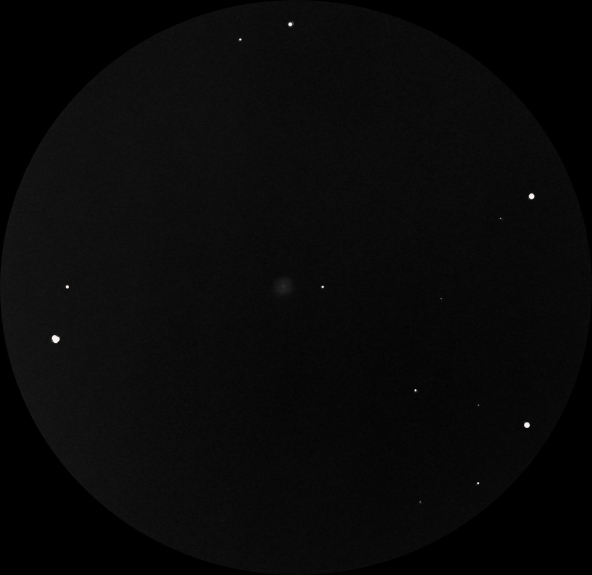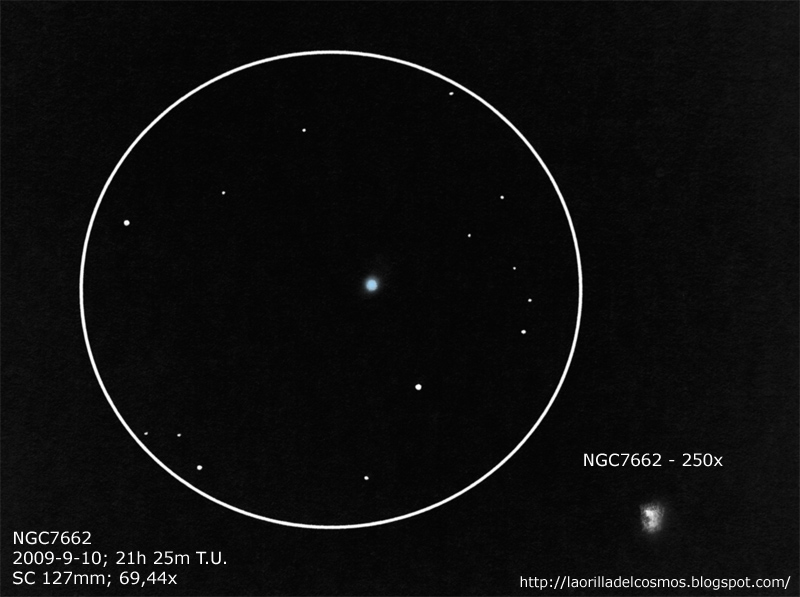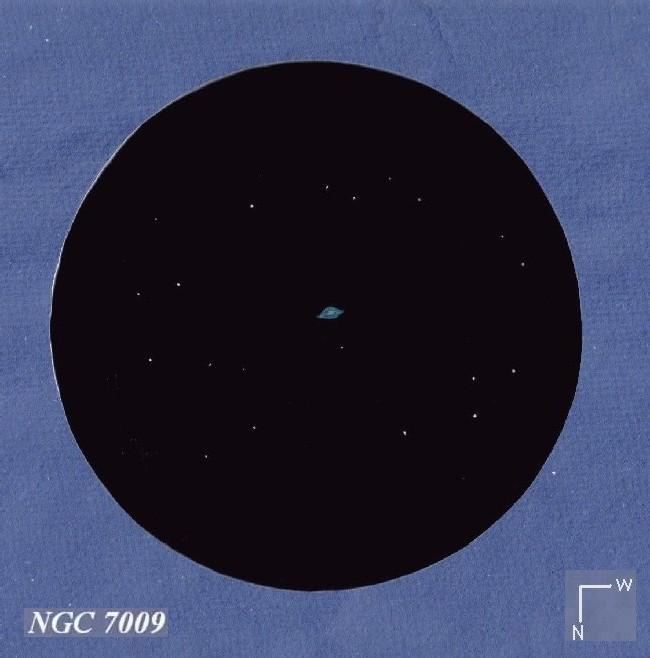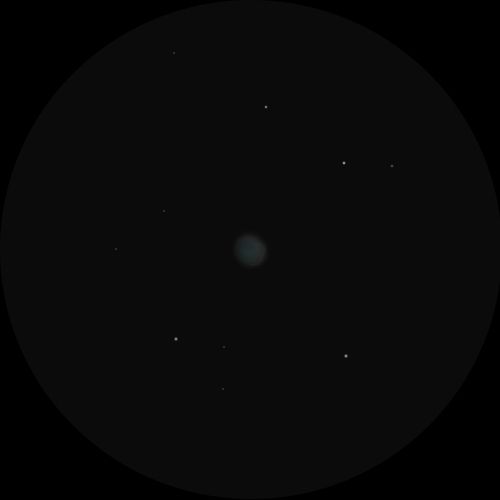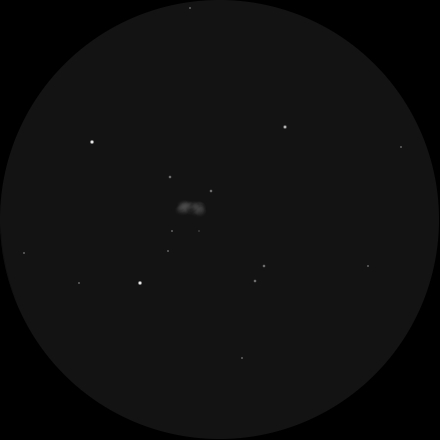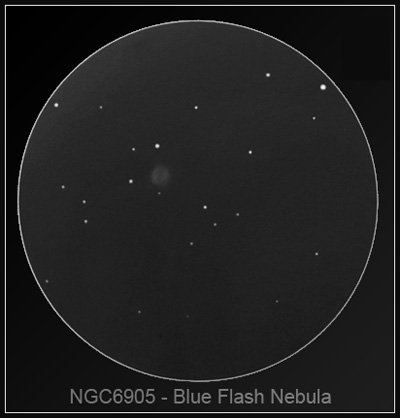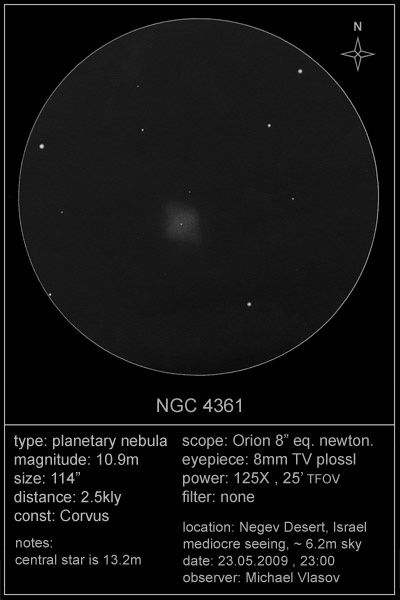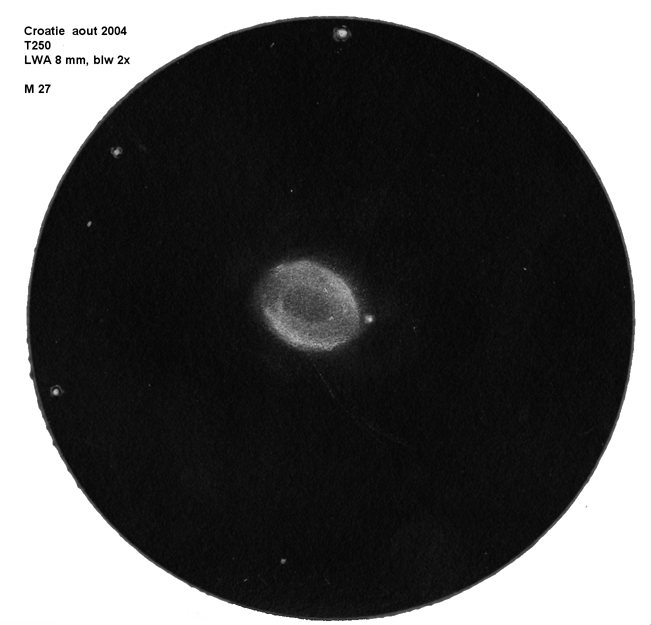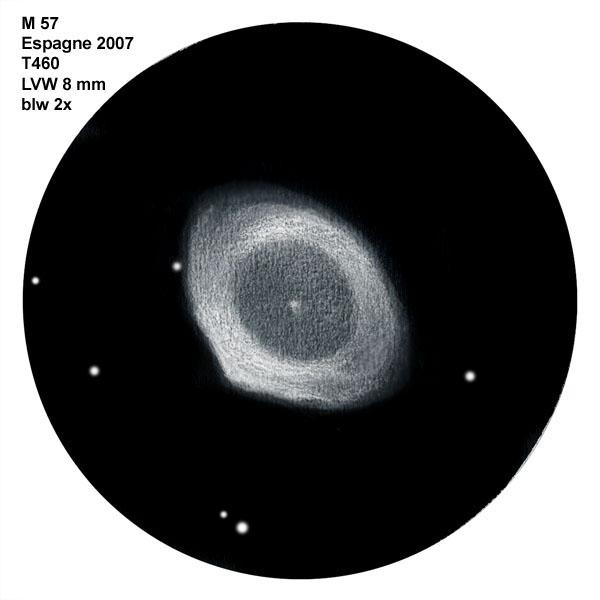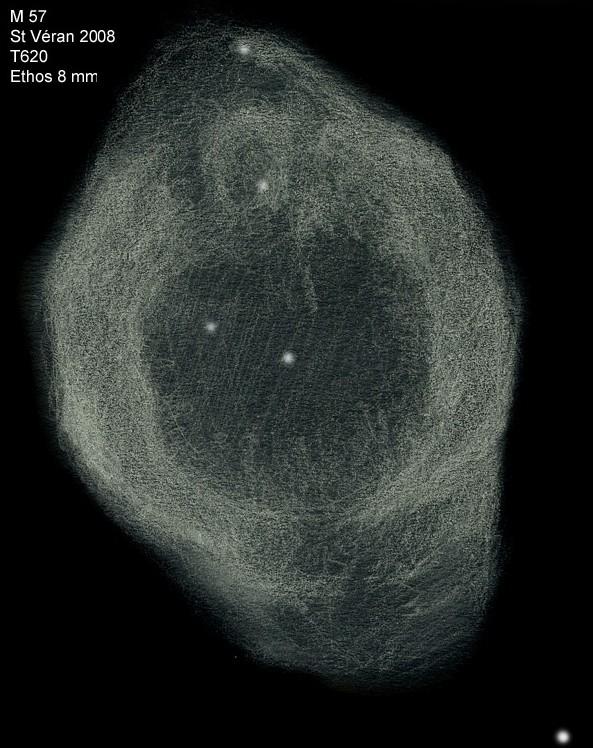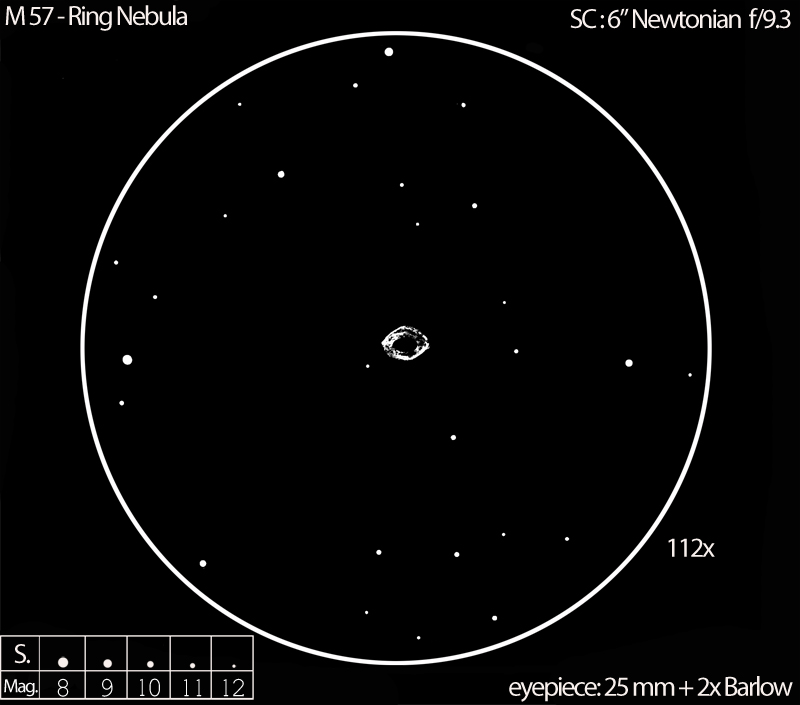
M 57 (NGC 6720), The Ring Nebula in Lyra
Sketch and Details by Constantin Psenitchi
Hi!
M 57 (NGC 6720) is one of the most remarkable planetary nebula. M 57 is called the “Ring Nebula” because of its donut shaped appearance. The sketch was made with a graphite pencil on white paper. After this, the sketch was scanned, inverted, and edited with Photoshop CS4.
– Object : M 57(NGC 6720) – Ring Nebula.
– Object type: planetary nebulae.
– Object location: Constellation Lyra.
– Date and Time: 09-16-2009, 00h 11m ( GMT + 3:00).
– Location: near Suceava, Romania.
– Scope: Newtonian f/9.3 , SC 6″ (150mm). Eyepiece: 25mm +2xBarlow.
– Mediums: Graphite pencil on white paper + Photoshop processing.
– Transparency: Clear sky. Low light pollution.
Best regards,
Constantin Psenitchi.

